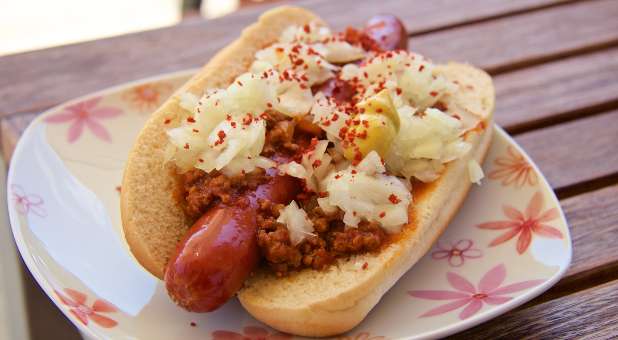
How many Coney dogs could you eat every week?
I was blessed with an opportunity early in my career to lead a franchise restaurant group. As with most restaurant chains, everything began with one successful site. The founder began selling franchises soon after the standalone achieved sustainable sales.
The restaurant offered a menu that delighted women. The decor was beautiful. Food was light and tasty. The site was centric to an upscale demographic. Everything worked—for one location.
One factor in replicating a successful restaurant is the operations manual. McDonald's garners large franchise fees because of its systems and manuals that cover every element of operations and service.
But with its franchise success menu, McDonald's also promises another key ingredient: the high demand for McDonald's food. The company's DNA dictates that every customer should receive the same experience in every store in the chain. Many people believe the foundation of McDonald's success is hamburgers, French fries and shakes (preaching, worship and youth groups).
But the franchise is sustainable because of systems (checklists) and strong consumer demand. Consistency across the chain is the best in the industry.
So how would we determine the demand for Coney dogs? How many Coney dogs would you, could you, eat every week? Intent to buy is another important ingredient in consumer behavior.
How many competitors exist within a five-mile concentric circle of the location? Has the demand for Coney dogs been satisfied? How many Coney-dog meals must the restaurant sell to break even?
I survived the reign of a restaurant owner who wanted to build a high-end Coney-dog eatery. The location suffered from bad egress, limited parking and no room for a drive-through. The site once boasted a sod farm. It seemed destined to revert to this use.
The owner signed a long-term lease. He also designed a 3,000-square-foot building without much concern for cost savings—unusual, since he planned the store as a franchise model.
The restaurant decor included a lifeguard stand. (I suppose a lifeguard might come in handy for customers eating chili- and cheese-covered hot dogs.) The walls displayed surfboards and other beachy reminders. Google Maps confirmed the nearest beach was several hundred miles away.
The owner bellowed, "Find me the highest-quality hot dog in the land." Perhaps this was the epitome of the word "oxymoron." His restaurant served the meaty dog on a traditional bun with chili from a can and a selection taken from a row of "gourmet" toppings. After all, the goal was to serve a gourmet Coney dog (oxymoron No. 2).
Without reading ahead, make a list of everything you can add to a Coney. Customers filed past a condiments bar to select their toppings of choice ketchup, mustard, relish, hot sauce, pickles, more pickles, onions, jalapenos, mushrooms, picante sauce, salsa, bacon bits, jelly beans, M&M's and other dream ingredients.
The restaurant failed not because of food quality or customer service but because of the low demand for gourmet Coney dogs. On some days, the restaurant didn't sell 20 of them. I distinctly remember my napkin math for this client. Sales had to total 350 meals every day of the year to simply cover expenses.
One Coney dog a month might be too much for most people. But we can observe the demand for hamburgers, fries and shakes at every three-lane McDonald's drive-through.
The fatal flaw for most startups and church plants is lack of primary demand at a specific location in the market. In general, markets overflow with too much of everything.
We must vet any new work with a consideration for demand. Churches fail for many of the same reasons any business fails. The spiritual unction that drives optimism and the surety of a successful plant quickly dissipates into cold, hard facts.
Of course, if God authors the work, it will flourish. Not all plants fail. Not all succeed. Could the gap exist because of factors such as location, operations and clarity of mission? The founding pastor's heart may hold the answer. Somewhere along the way, someone failed to count the cost—or simply miscalculated.
We can build a better Coney dog or ministry platform. But will anyone care? "For who among you, intending to build a tower, does not sit down first and count the cost" (Luke 14:28, emphasis added). ![]()
Dr. Steve Greene is publisher and executive vice president of the media group at Charisma Media and executive producer of the Charisma Podcast Network. His Charisma House book, Love Leads, is available at christianbook.com, amazon.com or your local bookstore. Download his Love Leads podcast at cpnshows.com, and follow his Love Leads blog at charismamag.com/blogs/love-leads.
Get Spirit-filled content delivered right to your inbox! Click here to subscribe to our newsletter.
Dr. Mark Rutland's
National Institute of Christian Leadership (NICL)
The NICL is one of the top leadership training programs in the U.S. taught by Dr. Mark Rutland. If you're the type of leader that likes to have total control over every aspect of your ministry and your future success, the NICL is right for you!
FREE NICL MINI-COURSE - Enroll for 3-hours of training from Dr. Rutland's full leadership course. Experience the NICL and decide if this training is right for you and your team.
Do you feel stuck? Do you feel like you’re not growing? Do you need help from an expert in leadership? There is no other leadership training like the NICL. Gain the leadership skills and confidence you need to lead your church, business or ministry. Get ready to accomplish all of your God-given dreams. CLICK HERE for NICL training dates and details.The NICL Online is an option for any leader with time or schedule constraints. It's also for leaders who want to expedite their training to receive advanced standing for Master Level credit hours. Work through Dr. Rutland's full training from the comfort of your home or ministry at your pace. Learn more about NICL Online. Learn more about NICL Online.


